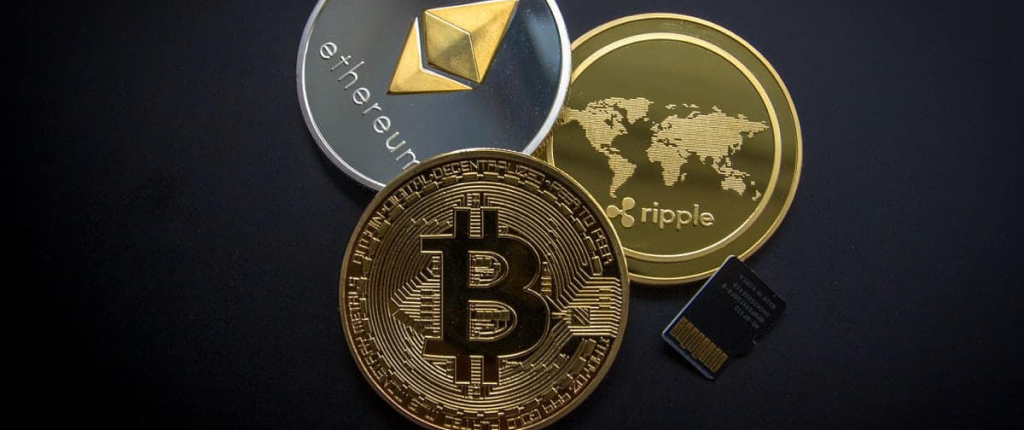If you’re interested in learning how you, too, can create your very own cryptocurrency, you are the right source!
Apart from the most popular names in cryptocurrencies such as Bitcoin, Ripple, Litecoin, etc. there are probably thousands of different types of digital currencies you can buy and trade online. And you’d be surprised to know that a lot of digital currencies, both well-known and new, have helped make their creators generate a lot of wealth. And although developing crypto may seem straightforward, on the contrary, to create new crypto, you need to do a lot of leg work, be committed, and stay motivated.
But it’s safe to say that the developers of those cryptocurrencies were more happy to know that they’re dreams, and hard work were realized – their aspirations came true! There’s no question that blockchain technology and cryptocurrencies have the power to develop, design, and launch a myriad of technological and innovative projects with a massive potential to change how we look at the world. And the best part is, in order to do so, blockchain technology doesn’t need a tremendous amount of investment.
Entrepreneurs and business organizations also have the power to select their project with cryptocurrency or digital tokens that will offer them more transactional and fund security, customer loyalty, the opportunity to increase their customer base, etc. In light of this, we’re going to talk about how you can also create a cryptocurrency. But let’s cover some important details before we dive into how you can build your crypto.

A Look into What Cryptocurrency Is
Before understanding everything you need to make your own cryptocurrency, you have to first understand what cryptocurrency really is. There are actually two definitions of cryptocurrencies:
The Mainstream Definition
Let’s first understand what a ‘currency’ is. In simpler words, a currency is a unit of storage with an attached value – which is also used as a means of transaction/exchange. Cryptocurrency is designed to technologically match the exact same specifications and purposes. But it’s different from tangible currencies in the sense that it’s, well, digital. Moreover, cryptocurrencies aren’t owned or printed like regular money by any country. Moreover, cryptocurrency is not regulated by a centralized authority like a state controlled bank or any other financial government entity.
The Deeper and Technical Definition
Cryptocurrency is digitally created – and is safeguarded by cryptography. Moreover, digital currencies function on blockchain networks. Existing blockchain tech is an unregulated yet secured, distributed ledger that keeps a record of crypto transactions, these transactions are encoded. Because cryptocurrencies are decentralized, there isn’t a government in the world that can regulate them.
Coin or Token – Is There Any Differences?
If you want to create a cryptocurrency, you need to know the differences between coins and tokens. You may have heard a lot of people use both these terms interchangeably every time. However, there are a couple of major differences between coins and tokens.
Coins are digital currencies that you’ve heard of. For example, Bitcoin, Litecoin, Ripple, Ethereum, etc. these are all coins. They’re cryptos that have their own blockchain platforms that they function on. And this means, all these digital currencies have their own, separate, transaction ledgers. These coins are what are used as a medium of exchange in crypto trading or as transfers of value.
Tokens, however, are developed to function atop pre-existing blockchain networks. Moreover, tokens aren’t backed by transaction ledgers. These contracts can be developed for virtually everything – for example, a token contract can be formed for services or for loyalty points. In addition, tokens aren’t like coins, which means they can’t be utilized everywhere. Tokens usually have restricted utilizations limited to a particular community, a sector of the economy, or any particular industry. But creating a token can be a great idea if you don’t have substantial coding skills or just want to augment another blockchain project.
The most popular type of token or rather a subset of token is known as ERC-20. This is a technical benchmark that’s associated with the Ethereum and similar blockchain platforms. Being Ethereum-based, ERC-20 has a list of laws and regulations that every Ethereum user must abide by or follow when making Ethereum smart contracts or doing any other type of crypto transaction on the Ethereum network. So, you can opt to create a coin or token based on your need.
The Reason Why People Must Have a Wide Variety of Choice in Choosing Cryptocurrencies
If you look at the top 10 list of the most popular digital assets in the world, you will quickly come to realize why exactly they’re popular and hence, powerful. Each cryptocurrency market has a different appeal for its user. And you’d be mistaken if you think that they’re popular because of the tech and innovation behind them – no, they’re widely used because they’re widely accepted and there are incredibly vast markets for each of the digital currencies.
It’s estimated that there are up to 10,000 digital currencies in the world. And you’re right to think that not all of them are going to be productive or as popular as the current top 10. However, if you look at how exponentially cryptocurrency trends are growing, it’s only logical to think that we can expect a couple of thousand more digital currencies in the next couple of years, which means you should create a cryptocurrency too. It’s also true that when anybody thinks about the cryptocurrency market, the first major cryptocurrency that comes to mind is Bitcoin. And there’s no question that Bitcoin has become a powerful crypto that’s used to send/ receive money throughout the globe.
But on the other hand, it’s also true that there are multiple smaller and lesser known cryptocurrencies – like for example, XRP (RippleNet), that are and will be consistently used for a myriad of different types of global transactions in the near future. Moreover, there will always be a need for smaller digital currencies that are designed to have uniquely innovative attributes – making them useful for a plethora of different purposes.
For example, one of the biggest disadvantages of using Bitcoin as a cryptocurrency is the fact that doing transactions with it can come with high and continuously increasing fees. This is going to keep making it costly for users to conduct transactions with Bitcoin. So, in other words, Bitcoin isn’t a viable crypto asset to do high volume trading with because of the fee structure.
How You Can Create a New Cryptocurrency?
Now that you’ve made your mind up about making your very own digital currency, have you thought about what’s going to be next?
This is important because you need to first decide why you need to create a cryptocurrency of your own. There are two primary reasons why anyone would create their own cryptocurrency – 1) making a lot of money and 2) helping or contributing to the development and expansion of the blockchain ecosystem. And there could also be a third reason – which is having an incredible idea that you want to realize.
After deciding why you want your own crypto – the next step is to brainstorm other critical aspects of the process. For example, are you looking to make your cryptocurrencies using green technology, is it possible to set up a mining rig, will your cryptocurrency have smart contract features, etc.
However, keep in mind that there aren’t any shortcuts to making cryptocurrencies. You’ll need to understand the basics and start with the foundational processes – beginning with an underlying blockchain tech. Moreover, you’ll also have to decide whether to use hashing algorithms to make your digital currency or a Bitcoin fork an already existing crypto (for example Ethereum, Litecoin, or Bitcoin), and customize it as per your specifications. And if you prefer, you can also develop a digital token on a current blockchain network according to your requirements. In light of this, let’s now dive into everything that you will need to do to create your cryptocurrency.

Understanding and Using a Consensus Mechanism
Before any transaction is added on any blockchain platform, it needs to be verified. The protocol that does this is known as a consensus mechanism. There are two primary consensus mechanisms – PoW (Proof-of-Work) and PoS (Proof-of-Stake). Most well-known digital currencies such as Bitcoin Ethereum, Litecoin, etc. use PoW.
As the name indicates, PoW is a hashing algorithm that was designed to verify and authenticate crypto transactions when a user or miner justifies that they’ve done a sufficient amount of ‘work’ to authenticate the transaction. However, keep in mind that the PoW hashing algorithm requires extensive resources.
PoS was mainly designed as an affordable, energy-efficient, and less time-intensive alternative to the PoW hashing algorithm. PoS dictates that crypto miners must acquire a large number of the digital coins they’re attempting to mine – encouraging them to save their coins rather than spend all of them.
However, you can merge the two hashing methods to make your own cryptocurrency – and there are a variety of different consensus algorithms that you can consider using. For example, PoC (Proof-of-Capacity). But if you haven’t attempted to create your own cryptocurrency before, it’s a good idea to start with either PoW or PoS.

Making Blockchain or Forking One That Already Exists
If you have borderline coding experience or knowledge, but don’t have enough time or if you aren’t completely certain that you can use your knowledge to build a new blockchain, you have the option of forking one that already exists.
Moreover, you can choose to make a crypto coin on popular blockchain networks such as Ethereum, Ripple, Quorum, etc. If you’re looking to make a coin that can be used to support another project you’re working on, it’s a good idea to create a digital token instead. Token creation doesn’t require a lot of resources and isn’t as time-intensive.
Making a Blockchain Fork
Any changes made to a current blockchain network is done through forks. Since a crypto coin is based on open source technologies, you can easily and readily use their codes. And this means you can just as easily fork them – but to do that you’ll need coding knowledge and experience. Here are some ways to develop a blockchain fork:
Utilizing coin generators to create a fork – this is an effective way to create a coin and develop a Bitcoin fork for blockchain. It’s recommended for users who don’t possess enough coding experience, knowledge, or skill. For instance, you can use ForkGen (an automated programming language) to fork the Bitcoin blockchain. You can set your own specifications and parameters and base your digital coin on them.
Making a fork yourself – This option is for individuals with coding skills and experience. If you feel you’re confident enough to build a blockchain network like Bitcoin yourself, then go for it. Here are some tips to help you on your journey:
- Determine the type of fork you want by doing extensive research on different blockchain networks
- Go to GitHub and access the blockchain’s open source (if it’s available)
- Change the configurations of the source code according to your specifications
Hard Forks and Soft Forks – Are There Any Differences between the Two?
Soft forks aren’t as resource-intensive as hard forks. Most new blocks or nodes need to have updated software, but nodes that aren’t updated can still function on soft forks. Hard forks, however, demand that 90% of nodes must have updated software to function. Moreover, nodes that aren’t updated will not be able to function on hard forks and won’t be validated by the system.
Top Blockchain Networks
If you don’t have any coding skills or experience and don’t want to bother with creating forks or a platform like Bitcoin, you can still create your own cryptocurrency. However, you’ll have to make a digital token instead of a digital coin. To do that you’ll need to create or choose a reliable blockchain network when it comes to creating a coin. Here are some of the best blockchain networks cryptocurrency exchanges throughout the globe:
- Quorum
- Ripple
- Ethereum
- EOS
- Iota
- Waves

Creating Blockchain Nodes
Blockchain nodes exist to authenticate crypto transactions and help store the entire transaction data on the distributed ledger. So, it’s important to develop blockchain nodes in line with your specifications and how you intend your blockchain to function. You can make verifications private or public, you can choose to go for cloud hosting, select different hardware requirements, etc.
Develop the Internal Framework and Architecture of your Blockchain
After you develop your blockchain nodes, make sure that each and every parameter and feature is in accordance with your specifications (especially features you won’t be able to customize once your crypto is launched), for example, you won’t be able to change the address you’re using.
Consolidate your Crypto Application Programming Interface (APIs)
While there are a handful of blockchain networks that come with built-in APIs, there are a lot that don’t. If you plan to create your own cryptocurrency on any current blockchain, it’s important to inspect whether the network has APIs specific to your requirements. However, if you’re developing a new blockchain for your crypto, it’s important to first do a thorough research on the type of APIs needed to build a new coin.
Developing the Crypto Interface
In order for a new crypto to be successful, it’s absolutely vital that its front-end design and development is topnotch. You have to ensure that the website for the crypto as well as all its databases have a quality design. The same goes for everything that your users and clients will be looking at and will be interacting with. You need to make sure that every bit of information you provide is presentable and in line with your project goals. Create a new interface that’s relevant and has the potential to quickly attract attention.
However, before you do anything else – create a white paper for your crypto. When it comes to launching your digital coin in the market, you will need a definitive white paper that contains every bit of information about your crypto. The white paper must include things about your crypto, like:
- An outline for the crypto
- Description of a problem in the market
- The need for the crypto and how it’s going solve the problem
- Number of coins intended for circulation, the what, the how, the when, etc.
- How will you be using the investment
- Your development team
- A complete roadmap
Your Cryptocurrency Must Comply with the Laws and Regulations
If you want to create a new cryptocurrency and want it to be successful and not be called a bad coin or run the risk of being quickly obsolete, you’ll need to make sure every aspect of your project is in compliance with the current laws and regulations. That’s why it’s so important to conduct a thorough research on the laws governing cryptocurrency development in your country. Study the legislation – it’s recommended that you get in touch with a lawyer to make the process of creating a cryptocurrency quicker and more transparent.
The Pros and Cons of Developing your Own Crypto
Pros
- You’re at the helm of your currency – one of the best things about launching your crypto is the fact that you’ll be the one to decide how the crypto flows in terms of value and its gradual evolution. The primary advantage of creating your own cryptocurrency is that it can drastically minimize this constant developer infighting that directly affects the price of prominent digital currencies such as Bitcoin, resulting in the creation of Bitcoin Cash, etc.
- Solving a potential problem in the market – If you’ve identified a widening gap in the crypto market and make a crypto that can specifically target that gap, you can exploit your currency.
Cons
- The market for crypto is increasingly competitive – there are thousands of cryptocurrencies throughout the globe. You’ll need to work tirelessly to make sure people notice your crypto.
- May not generate the types of rewards you hoped for – creating a new crypto is risky and there’s never any guarantees that it will succeed.
- Resource-Intensive – Creating a crypto requires a vast amount of dedicated resources and a large team of talented professionals.
Bottom Line
While you can certainly develop a new cryptocurrency, it’s important to understand that it’s never going to be easy. However, depending on the type and amount of effort and resources you manage to invest, the rewards may potentially outweigh the costs. If you’re ambitious and have always dreamed of making your cryptocurrency, now is the perfect time. There’s no doubt that the crypto stratosphere is going to continually grow – which means there’s tons of space for improvement and growth.










